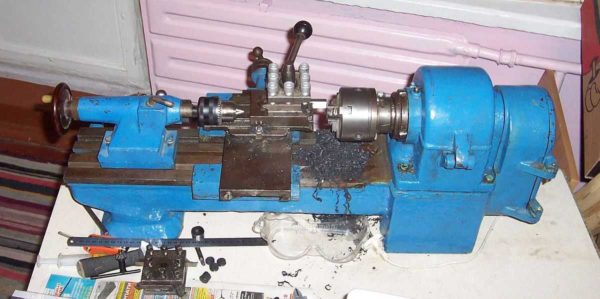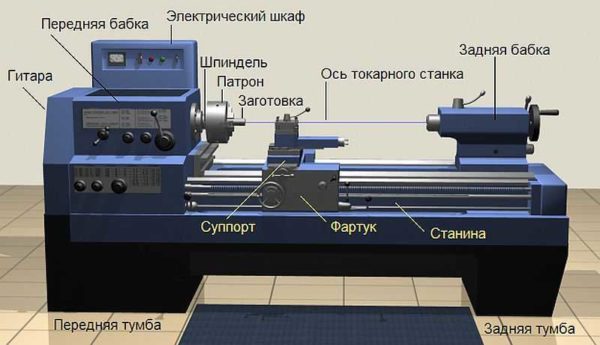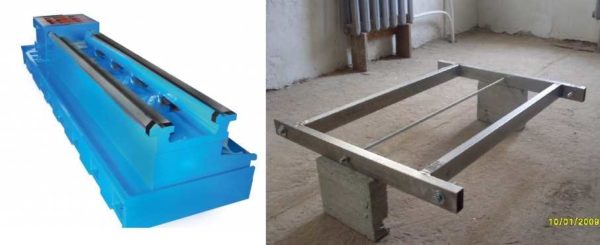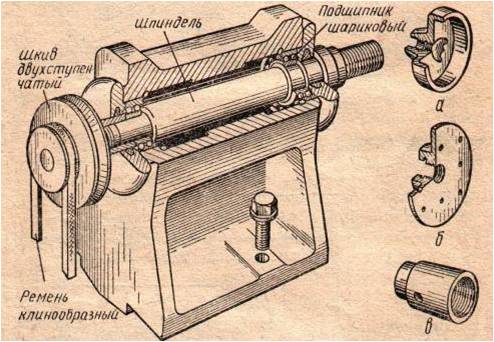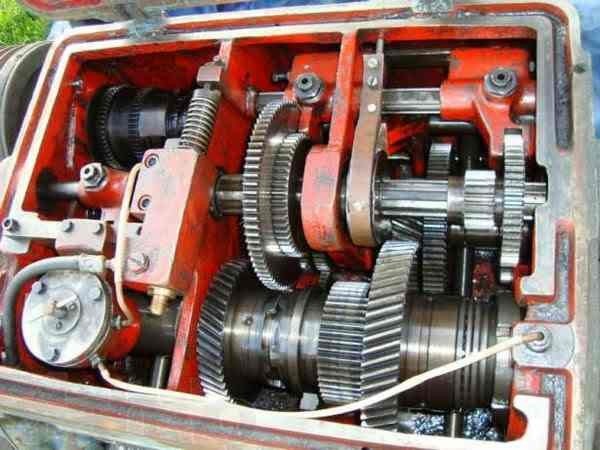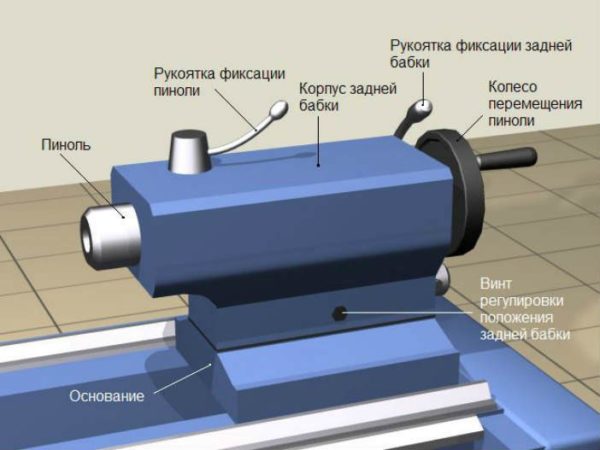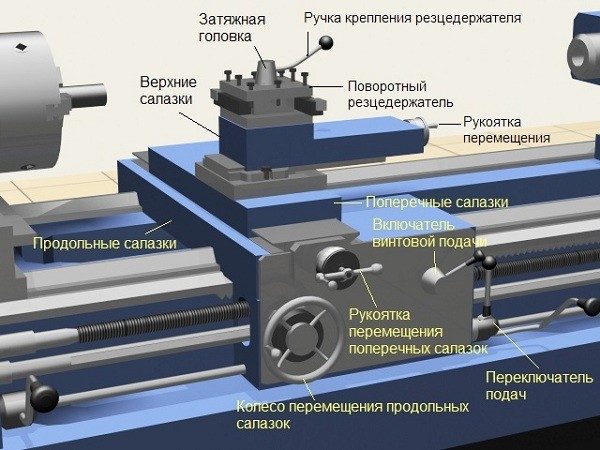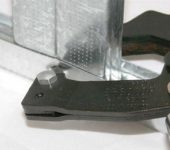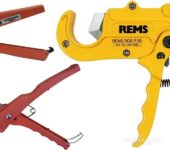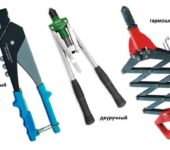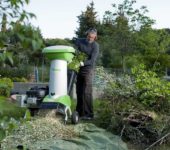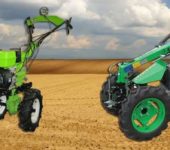How to choose a metal lathe in a garage
Metal parts are constantly required to repair a machine. Well, if the model is common, you can buy it. If the car is rare, you have to either wait a long time until it is delivered, or order production. In this case, you can purchase a lathe for the garage. If you have experience, you can use it for a side job.
The content of the article
What types of lathes are suitable for private use
There are nine types of lathes in total, but not all are needed in the garage. Most often, you can see small screw-cutting lathes among private traders. Along with machining parts (grinding, drilling, milling, drilling radial holes, etc.), they perform various types of threading and taper turning. It is such a lathe for a garage that they are trying to buy - it covers almost all the needs of car owners.
They are produced in two types - desktop and with a bed (floor). Desktop - small, lightweight (up to 200 kg) machines. It is easier for them to find a place in the garage. The disadvantage is that large and heavy parts cannot be processed on them. One more point: due to their low mass, they are not always able to produce high processing accuracy.
Floor lathes (usually school lathes) have a much larger weight and dimensions. For normal operation, a separate foundation must be made for them. Installation on vibration dampers is possible, but they are not easy to find.
Lathe device
In order to choose a lathe, it is desirable to know its structure, purpose, functions and possible parameters of each of the parts. First, let's take a look at the main nodes.
- Base or bed. Preferably a heavy, cast iron plate. Even the desktop models. Very light machines will be unstable, making even acceptable accuracy difficult to achieve.
- Engine and transmission. The engine can be powered from 220 V or from 380 V. The gearbox is a device for ensuring the rotation of the spindle and the support (on automatic and semi-automatic machines). The machine will last longer if the gears of the transmission are made of metal (sometimes plastic).
- Headstock. The main function is reliable fixation and rotation of the workpiece. Usually it is a massive metal cylinder rigidly fixed in the body. Sometimes the headstock and gearbox are combined, in some models the headstock can move the caliper or the machining head.
- Tailstock. This part is also necessary for the secure fixing of parts to the spindle. When processing small parts, it is rarely used, more often with long or massive ones. In some models, additional equipment can be attached to the tailstock - a cutter, drill, etc. - for the possibility of processing from both sides without changing the position of the part.
- Caliper. This is a whole unit, the device of which determines the list of operations performed by the machine. The support holds the cutting tool, moving it when machining a part in several planes at once (the simplest - only in one plane). It can be controlled automatically or manually.
These are the main components of the lathe. It makes sense to take a closer look at complex units, since the capabilities and operation of the equipment depend on their performance.
Stanina
Most often, these are two parallel massive metal beams / webs, connected by crossbars to give greater rigidity.The caliper and tailstock move along the bed. For this, the guide rails are machined on the bed. The tailstock moves along flat guides, the caliper moves along prismatic ones. Prismatic tailstock guides are very rare.
When choosing a used machine, pay attention to the condition of the slide and the smooth movement of parts along them.
Headstock (spindle)
The headstock in modern lathes, most often, combines a part holder and a device for changing the spindle speed. There are several types of speed control - by moving the levers to a certain position, using a regulator.
The control of the regulator with a smooth change in the rotation speed is carried out on the basis of a microprocessor control. In this case, there is a liquid crystal display on the headstock housing, which shows the current speed.
The main part of the headstock is the spindle, which on the one hand is connected to the electric drive pulley, on the other has a thread onto which the chucks are screwed to hold the workpiece. The accuracy of turning work directly depends on the condition of the spindle. There should be no beats and backlashes in this unit.
In the headstock there is a system of changeable gears for transferring and changing rotation to the gearbox shaft. When choosing a lathe for a garage, pay attention to the condition of the gears and the absence of spindle backlash. The accuracy of workpieces processing depends on this.
Tailstock
The tailstock is movable - it moves along the guides on the bed. It is brought to the part, its position is adjusted, the quill rests against the part, holding it in the desired position, the position of the quill is fixed by turning the corresponding handle. After that, the position of the tailstock is fixed with another locking handle.
In some models, the tailstock is designed not only to support massive or long parts in a given direction, but also to process them.
To do this, depending on the operations performed, the corresponding equipment is fixed on the quill - cutters, taps, drills. The additional center of the machine on the tailstock can be fixed or rotating. The rotating back center is made on high-speed machines, for removing large chips, turning cones.
Support
Lathe support - a movable part on which tools for processing parts are attached. Thanks to the special design of this unit, the cutter can move in three planes. Horizontal movement is provided by guides on the bed, longitudinal and cross slide.
The position of the cutter relative to the surface of the machine (and the workpiece) is set by the rotary tool holder. In each of the planes there is a latch that ensures holding in a given position.
The tool holder can be single or multiple. The tool holder, most often, is made in the form of a cylinder with a side slot into which a tool is inserted, which is fixed with bolts. On simple machines, there is a special groove on the support, into which a recess is inserted on the lower part of the holder. This is how the cutting tool is fixed on the machine.
Garage lathe: parameters
First of all, you are determined with the mass and type of connection. When choosing a mass, you should not strive to find the lightest machine. Very light ones do not provide stability, they can vibrate during operation, which will affect the accuracy of work. Yes, it is problematic to install heavy machines, but installation is a single event, you will have to work regularly. Therefore, weight is far from the most basic selection criterion.
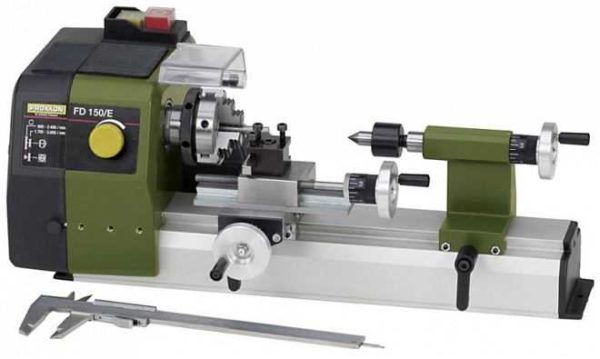
Too large lathes can not be installed in every garage, and small and medium-sized ones are an excellent choice
Connection type - single-phase or three-phase - this is more important. And then, three-phase can be connected to 220 through special starters. From the electrical characteristics, the engine power is also important. The higher it is, the greater the rotation speed the lathe can develop. These are general points. There are also special ones:
- The diameter of the workpiece that can be processed on the machine. Determined by the diameter of processing above the bed and above the slide.
- The length of the workpiece. Depends on the course.
- List of operations.
- Maximum number of revolutions.
- The adjustment method is smooth, stepwise.
- Reverse capability.
The dimensions of the workpieces are directly related to the dimensions of the machine. So a reasonable compromise has to be found here. Usually you don't want to clutter up the garage too much, but you need to handle the overall details.
Micro and mini lathes
In order not to clutter up the garage, you can find mini or micro lathes. They are very small in size and light in weight. For example, a PROMA SM-250E micro-lathe for a garage has dimensions of 540 * 300 * 270 mm and a weight of 35 kg. It can process workpieces 210 mm long and 140 mm in diameter. Smooth speed control from 100 to 2000 rpm. Not so bad for this size.
Despite its small size, it can perform the following operations:
- turning surfaces,
- threading;
- drilling;
- countersinking;
- deployment.
Grinding of parts, knurling, tool sharpening are also possible. The basic operations, as you can see, are present. The disadvantage is that you cannot process at least some large parts on machines of this type. And another disadvantage of this particular model is the price. This lathe for a garage costs from $ 900.
In the same category there are Chinese JET BD-3 and JET BD-6 (price 500-600 $) and domestic CRATON MML-01 (price 900 $), Enkor Corvette 401 (650 $), German Optimum - from 1300 $ to 6000 $; Czech Proma - from $ 900,
Floor options
Here the choice is not so wide, because both prices and weight are much higher. There are several proven models that you can install in your garage.
These are the so-called school machines - TV 4 (its improved version of TV 6), TV 7 and the desktop version of TV 16. With a mass of 280 kg (TV 4) and 400 kg of TV 7, it is desirable to have a separate foundation. If you just put it on a concrete floor, it will break it.

